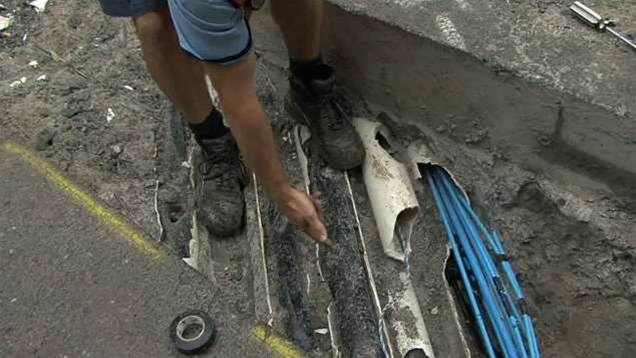The Tasmanian Government has asked its peers in Canberra for funding to build a second open access fibre link to the mainland.

But this time, Tasmania wants a cable dedicated to data communications.
The Basslink fibre optic link, completed in mid-2009, gave Tasmanians a backhaul alternative to Telstra. But it was piggybacked on top of the Basslink power interconnect cable.
Tasmania's economic development minister David O'Byrne said in August that the state government has ruled out a proposal for a second Basslink-type cable in the short to medium term due to cost and carbon tax considerations.
A second power interconnect, according to a cost-benefit analysis undertaken by Marchment Hill [pdf] this year, would likely cost $800 million and be built by 2026 - slightly more than the roughly $780 million cost for Basslink.
The second power interconnect would "support on-island renewable energy development by allowing substantially more energy to be exported from Tasmania than is possible through the existing Basslink interconnector", according to the study.
A spokesman for state energy minister Bryan Green confirmed the government would not wait on a second power connection to provide additional fibre backhaul.
"The Marchment Hill study for the Renewable Energy Industry Board only considered a second HVDC [high voltage direct current] interconnector," he said.
In a submission to the Regional Independent Telecommunications Review this month, the Tasmanian Government continued to push for a second, dedicated backhaul link to the island.
"The Tasmanian Government believes that the most efficient, practical, sustainable and certain way of delivering cost-effective capacity across Bass Strait would be the construction of a second robust and dedicated undersea crossing not owned by Telstra," its submission [pdf] states.
The Government warned failure to solve backhaul redundancy concerns before the National Broadband Network was deployed widely throughout the state could cause connection issues for residents and businesses in the state.
NBN Co did not include Tasmania among the locations to host one of the 121 points of interconnect planned for the network, a model which "benefits Tasmania only if competitive backhaul exists into and around the state".
The government commissioned a feasibility study into a dedicated telecommunications backhaul link in 2009, at a cost of $500,000, but never released the report.
The offices of both Green and O'Byrne refused to release the report, despite numerous requests for the information by iTnews.
The Tasmanian Government's submission also complained that funding for a second cable was not included in the recently completed $250 million Regional Broadband Blackspot Program (RBBP) in 2009. But the Tasmanian Government had failed make a public submission during the consultation period for the RBBP.
The Federal Government set aside $400 million in funding for digital programs prior to the previous regional telecommunications review in 2008, and ha since committed $74 million to recommendations from the resulting Glasson Report.
The Government has not yet indicated whether any of this funding will be available to respond to recommendations from the current review, chaired by former ATUG managing director Rosemary Sinclair.





.png&h=140&w=231&c=1&s=0)



_(26).jpg&w=100&c=1&s=0)

 iTnews Executive Retreat - Security Leaders Edition
iTnews Executive Retreat - Security Leaders Edition












_(1).jpg&h=140&w=231&c=1&s=0)



